- Home
- TV History
- Network Studios History
- Cameras
- Archives
- Viewseum
- About / Comments
Skip to content
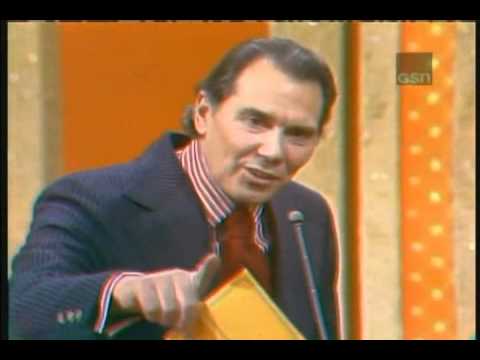

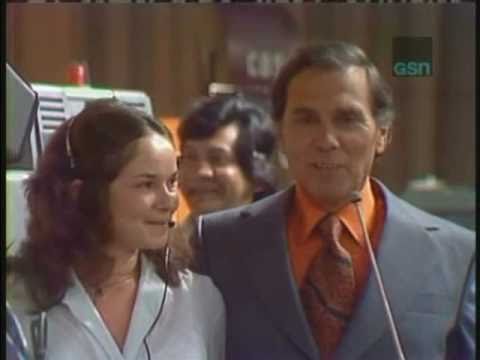

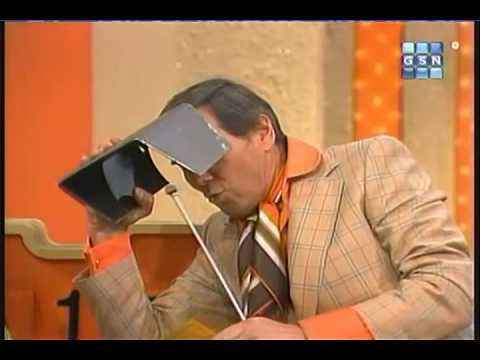





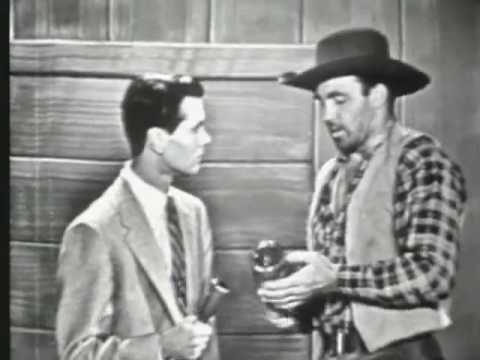





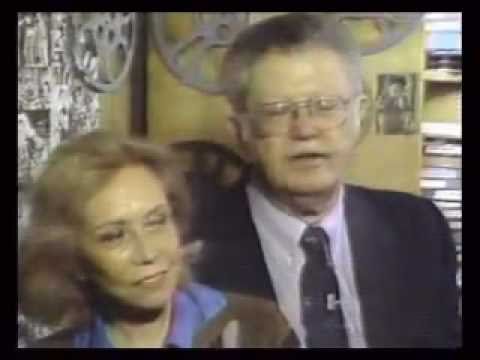

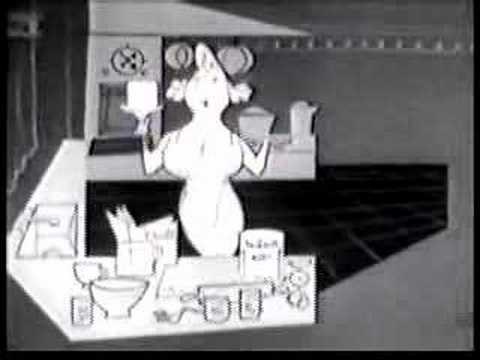

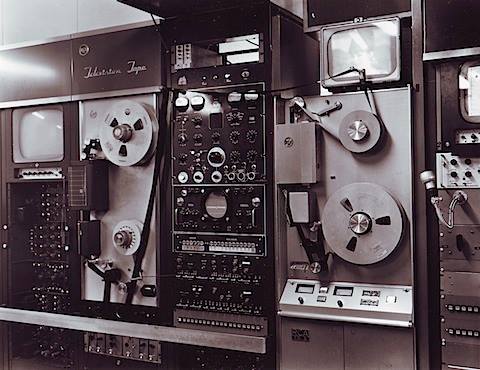

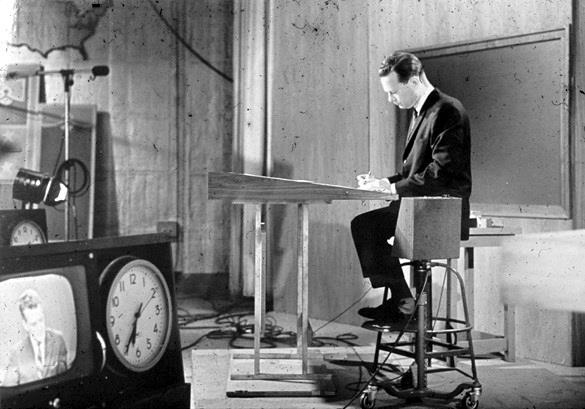

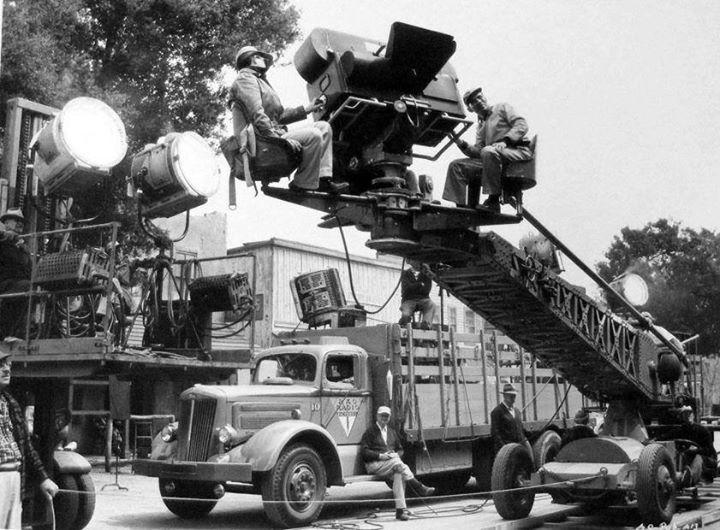









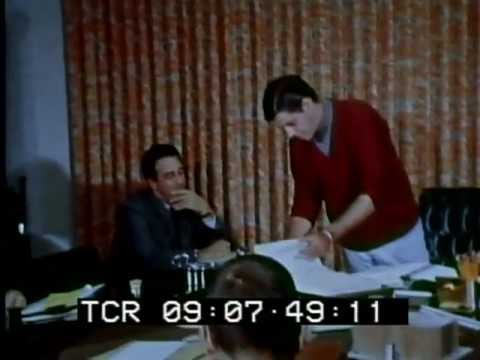

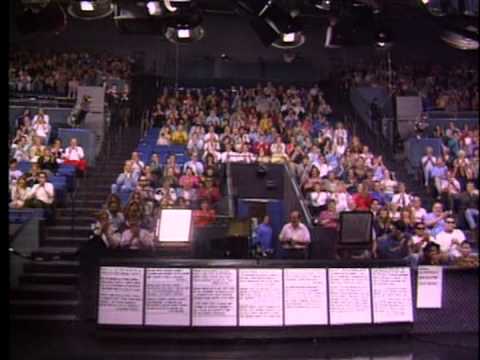

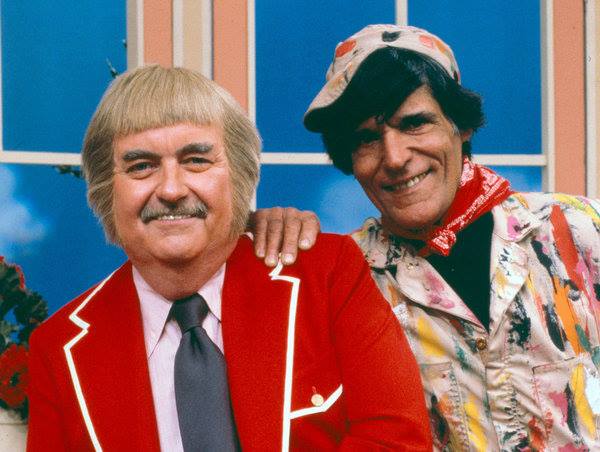

Posts in Category: TV History
Page 63 of 136
« Previous
1
2
3
4
5
6
7
8
9
10
11
12
13
14
15
16
17
18
19
20
21
22
23
24
25
26
27
28
29
30
31
32
33
34
35
36
37
38
39
40
41
42
43
44
45
46
47
48
49
50
51
52
53
54
55
56
57
58
59
60
61
62
63
64
65
66
67
68
69
70
71
72
73
74
75
76
77
78
79
80
81
82
83
84
85
86
87
88
89
90
91
92
93
94
95
96
97
98
99
100
101
102
103
104
105
106
107
108
109
110
111
112
113
114
115
116
117
118
119
120
121
122
123
124
125
126
127
128
129
130
131
132
133
134
135
136
Next » 

Even More ‘Match Game’ Follies…The Oldest Trick In The Book
On September 1, 2014
- TV History
Even More ‘Match Game’ Follies…The Oldest Trick In The Book
As we all know, if nothing else works…banging on the side of the TV, or even the camera usually does it! Enjoy and share! – Bobby Ellerbee
https://www.youtube.com/watch?v=o1FDyV8kYSE
A behind-the-scenes look at how Christina the cameraman keeps Camera 3 working with a bang during a game round.


More ‘Match Game’ Follies…The Show’s Female Camera Op
On September 1, 2014
- TV History
UPDATE 2021: Be sure and see the comments below…she replied and thanks to Christina for a number of other great photos she sent us!
I think this lady’s name is Christina but I don’t know her last name…anyone know? Also, is that Hector Rameriz behind them? Hector has been nominated for more Emmy Awards than anyone. This a nice look at the Norelco PC60s and in the background you can see the title board with the logo that is superd over the show’s “spinning block” open. Enjoy and share! – Bobby Ellerbee
https://www.youtube.com/watch?v=1CxJoOuOrC4
“There wasn’t much news yesterday, so on last night’s CBS News, there was 20 minutes of Walter Cronkite playing with his BLANK.” Bev Owens says “cameraman”, …


‘The Match Game’ Follies…Gene Attacks The Camera
On September 1, 2014
- TV History
‘The Match Game’ Follies…Gene Attacks The Camera
In this clip, Gene decides to direct the show “manually” as he tries to persuade the cameraman to give Charles Nelson Reilly a bit more time to prepare his answer “costume”. Enjoy and share! – Bobby Ellerbee


Meet Earl…The ‘Match Game’ Answer Board Operator
On September 1, 2014
- TV History
Meet Earl…The ‘Match Game’ Answer Board Operator
This is part of the reason Gene Rayburn and ‘The Match Game’ were such a perfect match, and hit! More clips from the show to come today! Stay tuned, enjoy and share! – Bobby Ellerbee
https://www.youtube.com/watch?v=-Up_ONDV22E
Gene Rayburn provides the audience with a rare glimpse of Earl.


Classic Letterman! Entering 6A From Backstage…February 1982
On September 1, 2014
- TV History
Classic Letterman! Entering 6A From Backstage…February 1982
This great clip is from the second week of the show and is a beautifully shot hand held entrance from Dave’s point of view. For long time fans and NBC vets, there will be many familiar faces here! Enjoy and share! – Bobby Ellerbee
https://www.youtube.com/watch?v=T_-EUjOEFr8
An interesting opening from “Late Night With David Letterman”, from the host’s perspective. Aired February 15, 1982 – the 9th show of the series.


A Special 4 Star Whammy…Carson And Three Top Cartoon Voices
On August 31, 2014
- TV History
A Special 4 Star Whammy…Carson And Three Top Cartoon Voices
First off, the lead segment of this 1955 kinescope of ‘The Johnny Carson Show’ on CBS is some of the best quality I’ve ever seen. The last part with Johnny as a reporter is more typical of kine quality, or lack there off.
Johnny’s wife is played by the great June Foray who as we all know by now was most famous for her roles as Rocky and Natasha on ‘The Adventures Of Rocky And Bullwinkle’.
In the clip’s Bonus Footage section, we get to see Sara Berner as the older lady in the French sketch. Among other things, she was the voice of Andy Panda, Chilly Willie and Jerry The Mouse who was Fred Astaire’s animated dancing partner in ‘Anchors Aweigh’. Like June Foray, she did hundreds of other voices in MGM and Warner Brothers cartoons.
John Stephenson plays a news man here, and is probably best known as Fred Flintstone’s boss…Mr. Slate. He also did a lot of voices on ‘Scooby Doo’ and ‘Johnny Quest’. Stevenson also shared the narration duties on ‘Dragnet’ with George Fenneman. Enjoy and share! – Bobby Ellerbee
https://www.youtube.com/watch?v=ZDd1TU-Paa0
June Foray making a rare on-screen appearance on the Johnny Carson show on CBS some time around September 1955 and sounding very much like Rocky the Flying S…


Ultra Rare! ‘Rocky & Bullwinkle’….Recording Session Tape
On August 31, 2014
- TV History
Ultra Rare! ‘Rocky & Bullwinkle’….Recording Session Tape
In all of broadcast history, there has never been a show quite like this…not before or or after. What we have here is a one of a kind trip behind the scenes into this one of a kind show.
For the next 16 minutes, we’ll be in the record booth with William Conrad as the narrator, Paul Frees as an unnamed character from Frostbite Falls, June Foray as Rocky and Bill Scott as Bullwinkle.
As a cartoon voice artist, I can tell you this is typically how these sessions go. Everyone is sharp and crisp at first, then, by the middle of this things get loose and giddy. The cussing and real fun comes in the last couple of minutes. Enjoy and share! – Bobby Ellerbee
https://www.youtube.com/watch?v=yUDzuGECfdQ
Here’s something I hope you’ll really like!…Outtakes from a recording session for the 1963 “Rocky & Bullwinkle” episode “The Weather Lady”. You’ll hear Wil…


‘Late Night With David Letterman’…NBC Debut, February 1, 1982
On August 31, 2014
- TV History
‘Late Night With David Letterman’…NBC Debut, February 1, 1982
In honor of yesterday’s 21st Anniversary of the show’s move to CBS, here is more of Dave’s history…this is how it all started. The embedded clip is the first of three parts that are available online and is the show’s “grand opening”. In part two we get a Letterman style tour of NBC Studio 6A.
https://www.youtube.com/watch?v=4uebc1Mtq2c Part 2
In part three, Dave’s trapped producer tries to get from one side of the stage to the other by crawling on the floor and the show’s first ever guest, Bill Murray makes his entrance. Enjoy and share! https://www.youtube.com/watch?v=GR4ltdzKfmY Part 3
https://www.youtube.com/watch?v=ZNplNAjlEz8 Part 1
Monologue


Meet The Voices Of Rocky And Bullwinkle…June Foray and Bill Scott
On August 30, 2014
- TV History
Meet The Voices Of Rocky And Bullwinkle…June Foray and Bill Scott
All you have to do is watch and the magic will unfold so I don’t need to say more, except this….tomorrow, I’ll have more from them and the whole cast! It’s a rare recording that fans will love! Enjoy and share!
https://www.youtube.com/watch?v=ieOGZtGUjRQ
This is a classic view of Bill Scott and June Foray. Bill sadly is no longer with us but June still is! This has local Boston content June has roots in Bosto…


Who Knew? The Untold Story Of The ‘John And Marsha’ Commercial
On August 30, 2014
- TV History
Who Knew? The Untold Story Of The ‘John And Marsha’ Commercial
Some of us remember this Snowdrift Shortening commercial from our childhood, others may remember it from seeing it used in ‘Mad Men’, but I’ll bet NONE of us knew THIS!
Surprised? Me too! I had no idea the the award winning commercial from 1956 was based on Stan Freberg’s 1951 novelty hit, but it turns out, this is the very first recording Freberg did for Capitol Records. The February 10, 1951 release, “John and Marsha” was a soap opera parody that consisted of the title characters (both played by Freberg) doing nothing but repeating each other’s names with intonations to match the moods. It never was a big hit, but did get a lot radio airplay and obviously left a lasting impression.
Producer/Director John Hubley and Animator/Artist Art Babbitt were given the New York Art Directors Award for Best Animated Short for the spot in June of 1956. I still remember all of the words…you too? Enjoy and share! – Bobby Ellerbee
https://www.youtube.com/watch?v=A-cy6276XY0
Another gem from the Babbitt/Hubley showreel from the late 1950s…
The First Live Videotape Delay System…
On August 30, 2014
- TV History
The First Live Videotape Delay System…
When videotape was introduced in 1956, the phrase “time shift” entered the broadcasters lexicon. The original meaning of “time shift” was more of a production management term in that now, a week of game shows and the like could be taped in a day or so and even over weekends instead of having to be set up and done live daily.
Somewhere along the line, the need for a live time shift came into play and this is how it was done. The only way to add a delay into a live program, until the late 70s, was to record on one machine (left) and playing back the signal on another machine (right). The RCA TRT-1 and TRT-2 machines were perfect for this because they were rackmounted.
If the flat decked Ampex VR1000s were next to each other, you could do it there too, but when tape decks began to be mounted at an angle, you couldn’t do this anymore because the tape path tension could not be maintained. That is why NBC, try as they may, could not add a 6 second delay to SNL when Richard Pryor hosted in 1975. Enjoy and share! – Bobby Ellerbee
Ultra Rare…David Brinkley’s Washington Studio Set
On August 29, 2014
- TV History
Ultra Rare…David Brinkley’s Washington Studio Location
This is the only photo I have ever seen of either Huntley’s or Brinkley’s desk sets in the studio.
As the “other half” of ‘The Huntley Brinkley Report’, David Brinkley was stationed in Washington at NBC’s WRC TV studios. This is his set with one Vizmo screen in view, and I think there was another one behind him. November 15, 1965, the show went color and was the first news show to do so.
The Huntley-Brinkley Report debuted October 29, 1956, with Huntley in New York and Brinkley in Washington. Producer Reuven Frank, who had advocated pairing Huntley and Brinkley for the convention coverage, thought using two anchors on a regular news program “was one of the dumber ideas I had ever heard.” Nonetheless, on the day of the new program’s first broadcast, Frank authored the program’s closing line, “Good night, Chet. Good night, David. And good night, for NBC News.”
This exchange became one of television’s most famous catch phrases even though both Huntley and Brinkley initially disliked it. Huntley handled the bulk of the news most nights, with Brinkley specializing in Washington-area news from the White House, U.S. Congress and the Pentagon. Enjoy and share! – Bobby Ellerbee
‘Devil’s Canyon’…The First 3D Western In Movie History
On August 29, 2014
- TV History
‘Devil’s Canyon’…The First 3D Western In Movie History
In the photo, we see two Technicolor cameras in a custom housing. They are facing each other to share a single lens and optical system. It would be interesting to see this thing on a dolly…I don’t know if a tripod could handle this kind of weight and bulk.
Originally a 3D production out of RKO, boasting Natural Vision 3 – Dimension, ‘Devil’s Canyon’ can now only be viewed in Technicolor flat mode. The film starred newcomer Dale Robertson and Virginia Mayo. It was produced by Howard Hughes, but even with that name and the 3D effect, it was a 1953 bomb at the box office. Enjoy and share!
ABC’s Legendary ‘General Hospital’…The Production History
On August 29, 2014
- TV History
ABC’s Legendary ‘General Hospital’…The Production History
There is more detail on these rare photos from our friend Brett Henry, so please click on them individually, as I don’t want that to get lost in this article from 1989. This is a detailed look back at the whens and wheres ‘General Hospital’ was done over the years and focuses on the newly rebuilt Studio TV 54 at the Prospect Lot. Enjoy and share!
For a show that spends approximately 50 weeks a year taping, the cast and crew of ABC’s daytime drama ‘General Hospital’ received the ultimate gift in 1989: a brand new sound stage.
After 26 years of toiling at three different locations around Los Angeles, General Hospital’s cast and crew returned to the ABC Television Center (a.k.a.the Lot) as the newest residents of Studio 54 on December 15, 1989.
General Hospital was taped at Studio A/54 when it premiered on the ABC Television Network in April 1963. “Back then it was a simple 30-minute, three-camera show, with a small cast and very limited space.” recalls Jack Neitlich, vice president and general manager, Broadcast Operations and Engineering, who joined the company that year. “Since then the show has grown tremendously. The cast has, on occasion, numbered as many as 100 actors and actresses. We needed a place that could accommodate the growth of the show.”
The process of moving General Hospital back to the Lot actually began three years earlier. Roger Lund, vice president, Administration, West Coast, picks up the story: “In 1986, as part of a company-wide program of facilities consolidation, the decision was made to sell Sunset-Gower and relocate General Hospital. Coupled with an earlier decision to sell the 1313 N. Vine Street building, we were faced with the added pressure of having to relocate and house the entire On-Air Promotion Department.
Many ideas were discussed and rejected, including the possibility of consolidating two studios into one. But that would have meant a decrease in the number of facilities available for other shows. The final solution proved the most cost efficient, and Lund credits William J. Murphy, manager of construction with the ultimate solution.
Noting that the control rooms were actually detached from the studio, and had been completely renovated for the 1984 Summer Olympics, Murphy suggested that perhaps the best route to take would be the demolition of the old Studio 54 and its replacement with a new structure. This meant that a new control room wouldn’t be necessary even if the sound stage was built anew. Looking out on the structure, Murphy believes the company made the right choice. “Part of our job is to live with what we have, in addition to what we design and build her., says Murphy. “It’s a beautifully-constructed building, and I’m proud to have a part of the process.”
Employees of the Lot watched the five story, 76,000 square foot edifice go up beam by beam, block by block. It took just 18 months to complete and by December the facility was ready for its new occupants. Studio 54 sits on more than half an acre, and the actual stage portion is a massive 200 by 100-foot room that is 46 feet high to the grid, allowing plenty of room for lights and other equipment. It is actually 76 feet to the top of the studio portion.
While most situation comedies are taped on 10,000 square feet of stage, General Hospital now has a stage double that size. The lower level boasts 40 dressing rooms, a tutorial classroom, state-of-the-art makeup and wardroom rooms and offices for the On-Air Promotion producers. The upper level houses the GH production offices, as well as administrative offices for most of the On-Air Promotion staff.
More unique is the fact that the fifth floor floats on 467 specifically-placed rubber shock absorbers, making the floor independent of the building and thus eliminating the noise level down on the stage. No one was more pleased with this feature than Executive Producer Wes Kenney who had a voice in the design of the facility. “It’s a compliment to the longevity, success and popularity of General Hospital that we were consulted in the planning of this magnificent building,” he says. “While the Gower Studio suited our needs, our intention was not only to duplicate what we had at Gower, but also to improve on it.”
In addition to the technical crew, the cast is also looking forward to settling in at the Lot. But none are more nostalgic about the return than Rachel Ames and John Beradino, both of whom have been with the show since its debut.
Ames, who plays “Audrey Handy,” smiles warmly when remembering the early days of the daytime drama. “I joined General Hospital when it was 10-months-old. There was only one dressing room for the men and one for the women. We were a small family and it worked extremely well — we wore our own clothes, did our own hair!” She also recalls how they improvised when something was missing: “There were no windows in the rehearsal room or the dressing rooms, so Roy Thinnes painted large windows on the wall for us; it’s so grand having a real window in my dressing room!”
John Beradino (“Steve Hardy”) also has fond memories of his days on the Lot and says, “It’s great getting back to where my roots are. I don’t think we ever had the friends at Gower that we had at the Lot. It’s good to be home!”
“It was tough in the beginning,” says Beradino. “We were just a half-hour show and I’d get real frustrated by the lack of time to do things right.” Beradino developed a reputation for venting his frustration on his dressing room door. “They were made of plywood, so they always broke,” he recalls with a laugh. “I did it so many times they finally smartened up and put in a real oak door. I didn’t notice that, and broke two fingers once when I punched the damn thing!”
The final show at the Sunset-Gower studio was done on December 16, and the move began as soon as the curtain rang down on that taping. Moving a show as large as General Hospital is not an easy task — just ask Manager of Plant Services Gerry Routt — this was the third time he’s handled the giant chore. “We moved from Studio 51 here at the Lot to the Cahuenga Studios in October 1977, then to Sunset-Gower in November of 1978 and now back here to the Lot.” says Routt.
Though millions of fans won’t be able to detect a difference, it’s change will shine through the contented looks of cast and crew. “It ain’t easy folks, doing an hour-long show, five days a week., 12 to 15 hours a day,” adds Balme, “but working in this place will sure help.”


Remember This? Carson Crashes Rickles…
On August 28, 2014
- TV History
Remember This?
This was the night Johnny went from his set in Studio 1, across the hall to Studio 3 where Don Rickles was taping. The cameras are RCA TK44Bs. Enjoy and share! – Bobby Ellerbee
https://www.youtube.com/watch?v=Mj2S2n64DeQ
Johnny Carson tracks down Don Rickles on the set of “C.P.O. Sharkey” to see if Don broke Johnny’s cigarette box on “The Tonight Show” in 1976. MORE JOHNNY CA…


Life After ‘Letterman’: Paul Shaffer on Show’s Final Music and What’s Next
On August 28, 2014
- TV History
Life After Letterman…What’s Next For Paul Shaffer?
Dave and Paul have been together since day one, and although there is no earth shaking news here, there are some hints that after that party ends there will me more to come from both of them.
Life After ‘Letterman’: Paul Shaffer on Show’s Final Music and What’s Next
Paul Shaffer tells us about his post-Letterman plan and says the ‘Late Show’ host won’t “stay home with his feet up” after leaving.


First Radio Commercial Hit Airwaves 90 Years Ago
On August 28, 2014
- TV History
August 28, 1922…The First Radio Commercial Airs On WEAF
Would you believe that AT&T invented radio advertising? It’s true, and their first and only involvement with broadcast radio left a lasting legacy.
It’s only fitting that the story be told here by radio, and this five minute NPR piece tells it in detail using what radio is most famous for…theater of the mind. Enjoy and share! – Bobby Ellerbee
http://www.npr.org/2012/08/29/160265990/first-radio-commercial-hit-airwaves-90-years-ago
First Radio Commercial Hit Airwaves 90 Years Ago
Reporter John McDonough reports how AT&T ran the first-ever radio commercial on its station WEAF in New York 90 years ago this week. It changed the way broadcast was economically structured.


The Birth Of Video Assisted Movie Making…Jerry’s Noisy Toy
On August 27, 2014
- TV History, Viewseum
The Birth Of Video Assisted Movie Making…Jerry’s Noisy Toy
This video clip is cued to start at our first look at Jerry Lewis with his custom built video assist equipment…a long rack called Jerry’s Noisy Toy.
This is from a 4 minute film featurette for 1966 movie audiences, but Lewis had been using this, or a similar configuration of these elements, since around 1960. As a director, producer and talent, he needed a way to be in three places at once and this was his solution.
With a small RCA camera mounted on the movie camera (seen in first minute of the video), he could see how a shot was framed in the monitor. With video and audio tape, he could instantly play back scenes and not have to wait for the film to be developed to see if he got his shots.
Lewis was the first director-actor to make use of a “closed circuit television preview system” (now commonly referred to as video assist) with his 1960 film “The Bellboy.”


The Final Days Of ‘Tonight’ With Johnny Carson…
On August 27, 2014
- TV History
The Final Days Of ‘Tonight’ With Johnny Carson…
This clip ran in Johnny’s last week on the air. I have seen a version of this from the show and in his intro, he said what we all know to be true…that he allowed very little coverage of the backstage elements of the show, which makes this one of those rare times. The studio is Burbank’s Studio 1.
I think this ran on May 19th, just four days before the last broadcast on May 22, 1992. Enjoy and share! – Bobby Ellerbee
https://www.youtube.com/watch?v=QDB_mE5uN7k
Now THIS is what it means to be in show business!
A Tribute To ‘Captain Kangaroo’ You’ll Want To Read, HEAR
On August 26, 2014
- TV History
A Tribute To ‘Captain Kangaroo’ You’ll Want To Read, HEAR And Share!
Today is the first time I ever knew the name of this show’s famous theme song, much less, heard the full 2:43 version of “Puffin Billy”.
At this link is the original full version. The ‘Captain Kangaroo’ theme we heard on television was an edited version that repeated the first two verses over and over, but never allowed us to hear the bridge and nice half step up into the final verses that come around 1:08.
“Puffin Billy” was an instrumental, written by Edward G. White in 1934. The track was from a British stock music production library known as the Chappell Recorded Music Library which was sold through a New York agency called Emil Ascher. The tune’s original title referred to a British steam locomotive which is now on display in Melbourne, Australia.
You’ll never guess who the man in the photo is…even if I told you his name…Cosmo Allegretti. He was on the show every day, but we never saw him. Cosmo was the puppet master of the show! He did Bunny Rabbit, Grandfather Clock, Dancing Bear and more.
By the way, I just read yesterday that before videotape came along, Bob Keeshan and company did this two hour show live twice in a row, six days a week with only a :40 second break between the live east coast broadcast and the live west coast broadcast. There was no time for a Kinescope and they did this for three years from 1955 till 1958. Amazing! Enjoy and SHARE THIS! – Bobby Ellerbee
Page 63 of 136
« Previous
1
2
3
4
5
6
7
8
9
10
11
12
13
14
15
16
17
18
19
20
21
22
23
24
25
26
27
28
29
30
31
32
33
34
35
36
37
38
39
40
41
42
43
44
45
46
47
48
49
50
51
52
53
54
55
56
57
58
59
60
61
62
63
64
65
66
67
68
69
70
71
72
73
74
75
76
77
78
79
80
81
82
83
84
85
86
87
88
89
90
91
92
93
94
95
96
97
98
99
100
101
102
103
104
105
106
107
108
109
110
111
112
113
114
115
116
117
118
119
120
121
122
123
124
125
126
127
128
129
130
131
132
133
134
135
136
Next »